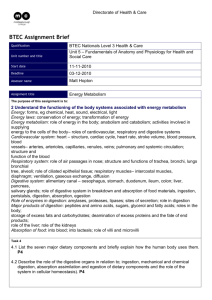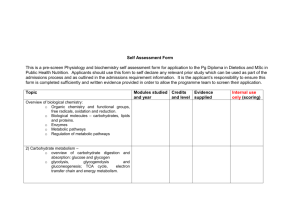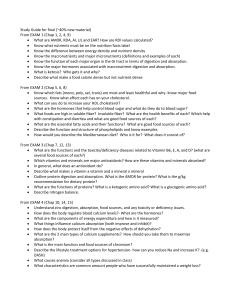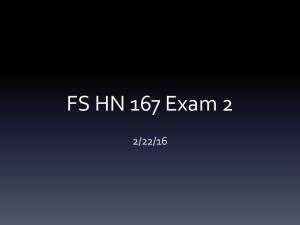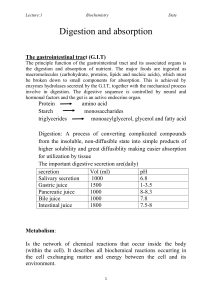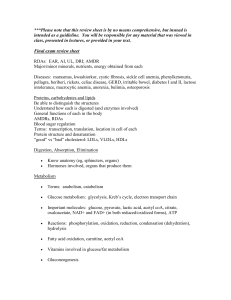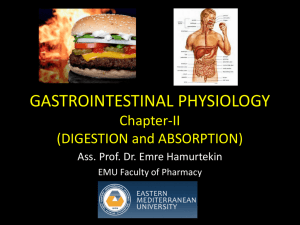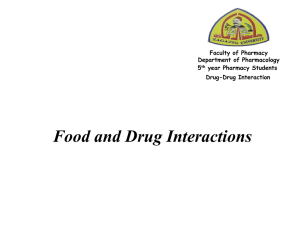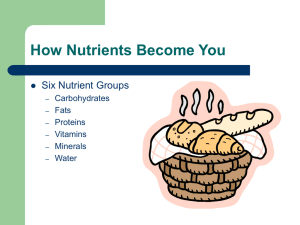Study Points for Final
advertisement
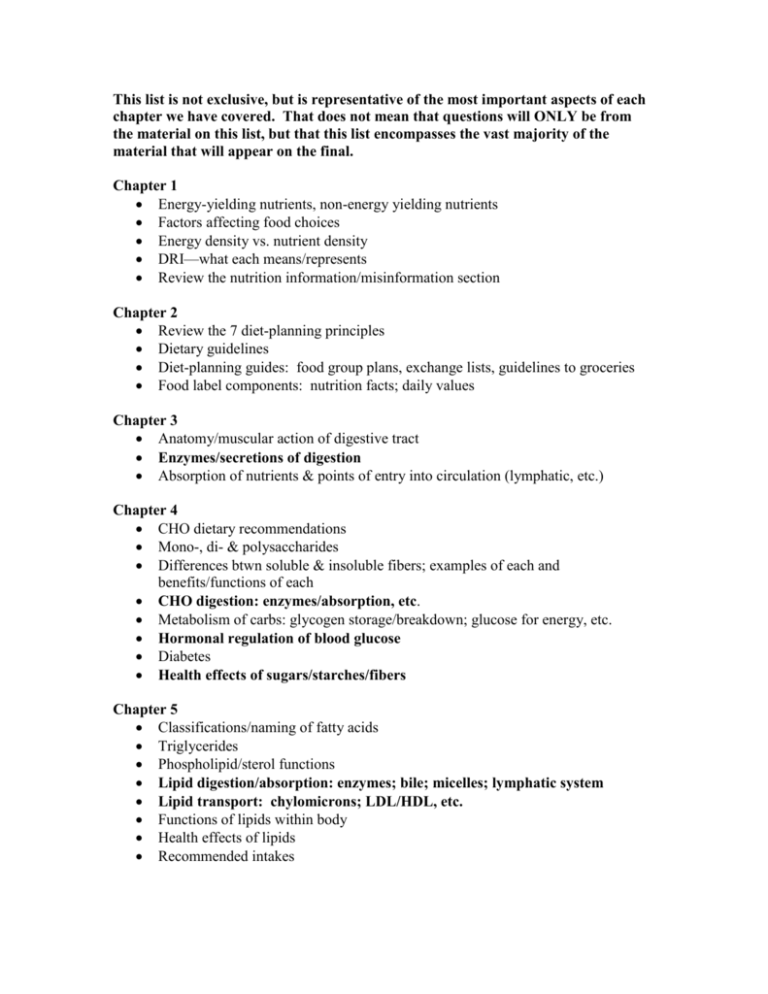
This list is not exclusive, but is representative of the most important aspects of each chapter we have covered. That does not mean that questions will ONLY be from the material on this list, but that this list encompasses the vast majority of the material that will appear on the final. Chapter 1 Energy-yielding nutrients, non-energy yielding nutrients Factors affecting food choices Energy density vs. nutrient density DRI—what each means/represents Review the nutrition information/misinformation section Chapter 2 Review the 7 diet-planning principles Dietary guidelines Diet-planning guides: food group plans, exchange lists, guidelines to groceries Food label components: nutrition facts; daily values Chapter 3 Anatomy/muscular action of digestive tract Enzymes/secretions of digestion Absorption of nutrients & points of entry into circulation (lymphatic, etc.) Chapter 4 CHO dietary recommendations Mono-, di- & polysaccharides Differences btwn soluble & insoluble fibers; examples of each and benefits/functions of each CHO digestion: enzymes/absorption, etc. Metabolism of carbs: glycogen storage/breakdown; glucose for energy, etc. Hormonal regulation of blood glucose Diabetes Health effects of sugars/starches/fibers Chapter 5 Classifications/naming of fatty acids Triglycerides Phospholipid/sterol functions Lipid digestion/absorption: enzymes; bile; micelles; lymphatic system Lipid transport: chylomicrons; LDL/HDL, etc. Functions of lipids within body Health effects of lipids Recommended intakes Chapter 6 Protein structure; shapes Digestion/absorption Functions of proteins within the body Nitrogen balance Digestibility/quality of proteins Protein-energy malnutrition Recommended intakes Chapter 7 Definition of metabolism; anabolism; catabolism ATP—what it is and how do we get it? Energy pathways: glycolysis, TCA, ETC o General inputs/outputs for each pathway o Under what conditions energy is generated by each pathway o Central unit of metabolism is AcCoA o Cellular location of each pathway Feasting/fasting: what happens during caloric excesses/deficits? Chapter 8 Factors that affect food intake o Hunger, appetite, satiety o Overriding hunger/satiety mechanisms Components of energy expenditure o BMR; RMR o Components contributing to & factors affecting BMR o Physical activity Body weight/composition o BMI o Waist circumference o Fat distribution & its consequences o Health risks of excess body fat/weight Chapter 9 Fat cell metabolism Leptin/ghrelin Factors contributing to obesity Problems with obesity Realistic weight loss strategies: caloric intakes/reductions, etc… Chapters 10 & 11 General characteristics of vitamins; bioavailability & factors affecting it Differences btwn fat- & water-soluble vitamins General functions of vitamins Good sources for each vitamin Problems associated with deficiency Chapter 12 Roles of water in the body Water balance: sources; losses recommendations Factors regulating fluid balance/blood pressure: ADH, RAA system Electrolytes: contribution to fluid balance; intra- & extracellular ions Major minerals: functions Calcium absorption & regulation of absorption/mobilization Chapter 13 Functions of trace minerals: primarily Fe, Zn, I, Cu Problems associated with deficiencies Good sources Chapter 14 Benefits of fitness Guidelines for developing fitness Fuel sources for various intensity levels of physical activity o Creatine phosphate o Glycogen/glucose o Fatty acids o Protein? Affects of training on muscles, metabolic pathways Fluids/electrolytes during activity o Dehydration; hyperthermia; heat stroke o Hyponatremia Diets to support fitness Pre-/Post-competition meals Chapter 15 Critical periods Folate requirements; deficiency problems Chronic disease & its effects on pregnancy/fetus Maternal weight/weight gain during pregnancy Exercise during pregnancy Energy/nutrient needs Practices incompatible with pregnancy
